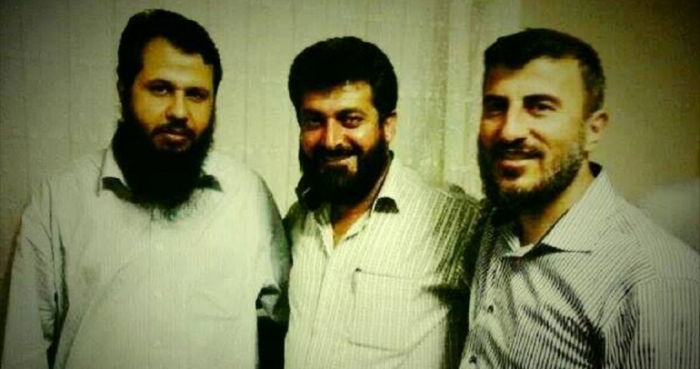About 1,500 detainees from Sednaya Prison were released under the first presidential amnesty decree of May 31, 2011, two months after the war in Syria erupted. Most of those released adhered to radical Islamist ideology. Among those released were three prisoners known as the ‘companions’ of Sednaya’s prison: Hassan Aboud (Abou Abd Allah Al-Hamawy) who later formed the Ahrar al-Sham Islamic Movement and was appointed as its commander; the late Zahran Alloush, founder of Liwa al-Islam, and who was later appointed as leader of the Army of Islam; and Ahmad Abou Issa, who after his release established the Suqour al-Sham Brigade.
Abu Mohammad al-Jolani, commander of Nusra Front, was also detained with many others like Mustafa al-Sit Maryam, famously known as Abou Mus’ab as-Suri, one of the theorists of the Salafist jihadist movement and author of the book "Global Jihad", which is considered one of the most important references to the history of Islamic extremism.
Most ex-jihadists raised the banner of jihad in Syria and were involved, in the beginning of the war, in the formation of the Free Syrian Army by the dissident officers from the Syrian official army. Later on, the Free Syrian Army absorbed a great number of jihadists who formed their own militias that started attracting thousands of jihadists from all over the world. Those militias absorbed the Free Syrian Army, and in turn, they were absorbed by the Nusra Front, which was later absorbed by the Islamic State (ISIS).
These leaders left Sednaya Prison in May 2011 to participate, consciously or not, in the formation of the inner core of the Islamization process of the revolution and the polarization of the extremists through the sultan that was revealed to them by God. These leaders were tools in the formation of Nusra Front, which embraced ISIS. The revolution for liberty and dignity veered off to results desired by the Assad regime to cover up the crimes it perpetrated. The regime emphasized that all of that would not have happened if it was not for the dubious international indifference and its intended reluctance to find a real solution for what is going on in Syria.
On September 9, 2014, Hassan Abboud was assassinated together with a number of his entourage. It was said then that the incident was planned by the regime through its agents inside Ahrar al-Sham.
A year later, on December 25, 2015, Zahran Alloush, founder and commander of the Army of Islam was killed together with a number of his aides by a Russian air strike.
It seems that these friends’ role in Syria has come to an end. Unfortunately, the shrewd regime orchestrated their amnesty as shown by the events in Syria and the regime’s war: “It is Assad or we burn the country”. Perhaps these rebel leaders did not know what the regime planned for them after they were released, out of naivety, exaggerated faith in goodness, or because their desire for vengeance blinded their reading of the future.
It is certain, though, that the regime began a campaign a year ago to rid Syria of them through clear and targeted political murders that would have never been possible without the infiltration of the government’s agents within these terrorist organizations.
This article was edited by The Syrian Observer. Responsibility for the information and views set out in this article lies entirely with the author.


